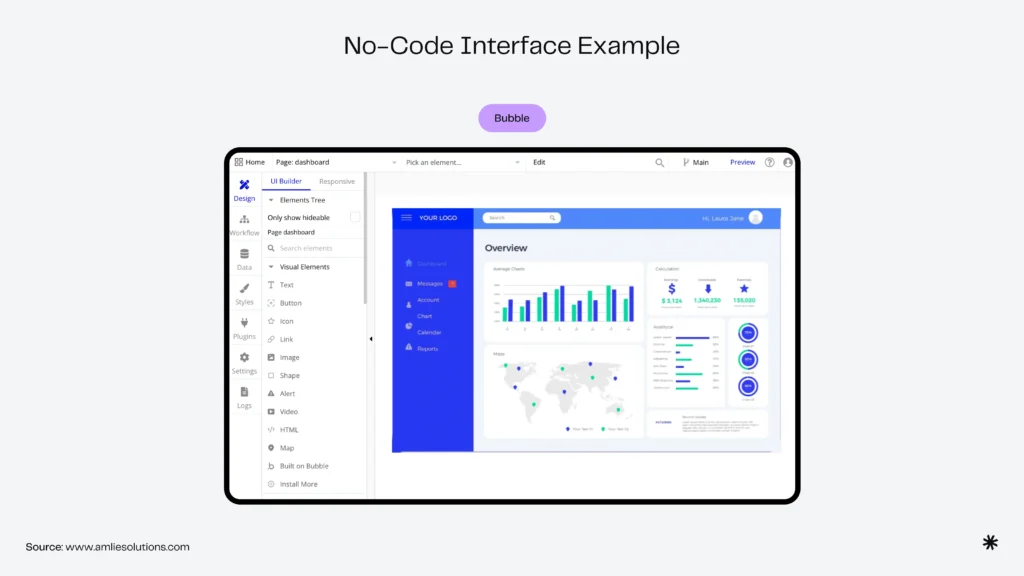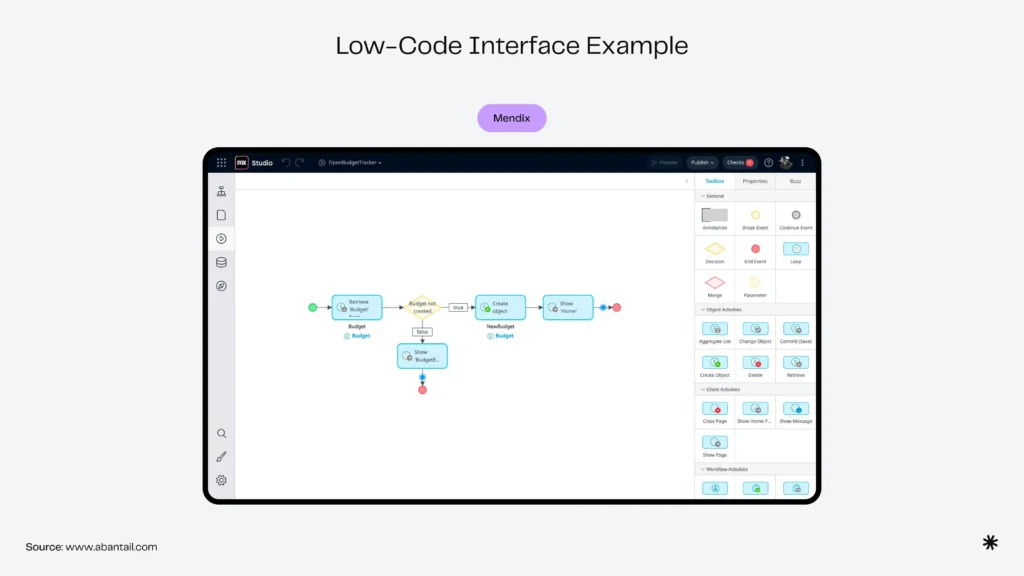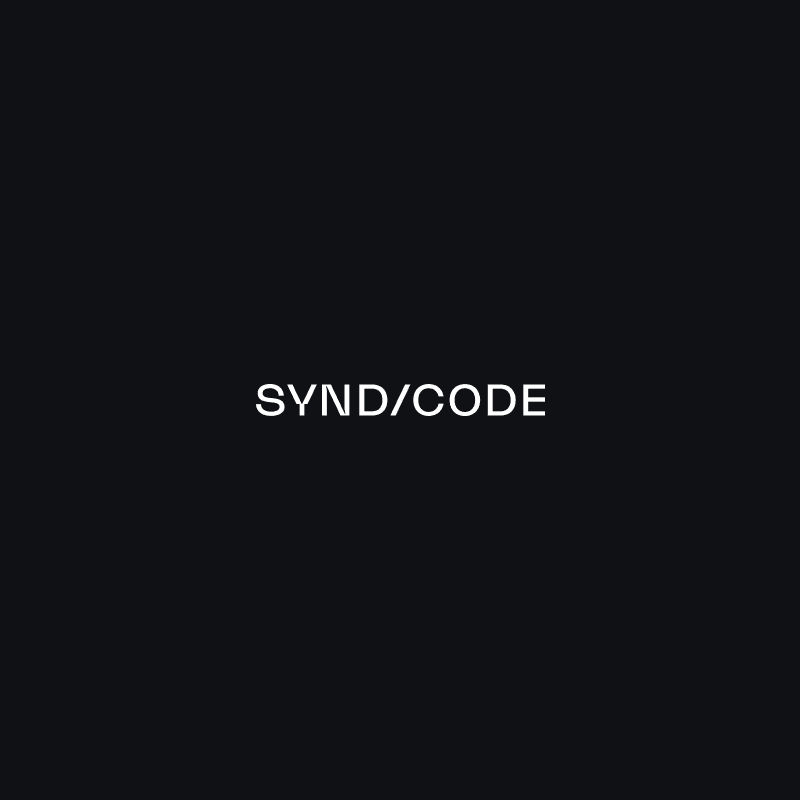With AI tools like ChatGPT, Claude, and Google Cloud Vision becoming increasingly accessible, low- and no-code development platforms are seeing a surge in popularity.
In fact, nearly half of the respondents in a Mendix survey reported that low-code platforms helped them speed up development and reduce costs. The fusion of AI and visual development tools thus creates a compelling opportunity to launch smarter, faster, and cheaper than ever before.
But there’s a catch.
While these tools are ideal for validating ideas and building MVPs, they rarely deliver production-grade SaaS products that can scale, comply with security standards, or meet complex customer demands. That’s where the transition from low-/no-code to custom software development becomes not just beneficial, but essential.
In this post, we’ll break down:
- The difference between low-code and no-code platforms
- How AI tools enhance both approaches
- Where each method works best, and where it falls short
- Why custom development is critical once your SaaS idea gains traction.
What is no-code development?
No-code development platforms offer a fully visual interface, where you can build apps by dragging prebuilt components into place, configuring workflows, and connecting to data—all without writing a single line of code.
These platforms eliminate the need for coding knowledge, making software development accessible to business users, product managers, and citizen developers.
Core features of no-code development platforms include:
- 100% visual interface with drag-and-drop functionality and no coding knowledge required
- Templates and reusable components to speed up app design
- Built-in logic tools for workflows, forms, and decision rules
- Strong focus on automation through easy integration with third-party tools like Zapier, Airtable, and Stripe.

No-code and AI integrations
Many no-code platforms offer plug-and-play AI integrations. Examples include:
- Using OpenAI via Zapier to generate email replies
- Building a customer support bot with ChatGPT plugins
- Automatically summarizing user feedback with Claude or GPT-4.
These integrations make it easy to add AI-driven features without complex setup or coding.
However, it’s important to remember that no-code platforms are typically closed systems. You’re limited to the features, templates, and plugins the vendor provides. While this simplifies the development process and ensures stability, it also restricts your ability to customize features, handle large-scale data processing, or build complex SaaS architectures.
When no-code works best
No-code platforms are ideal when you need to get something off the ground fast, without writing code or managing infrastructure. They’re especially useful for non-technical founders, solo entrepreneurs, or product teams who want to test ideas, build internal tools, or launch MVPs with minimal overhead.
No-code works best when:
- The app’s logic is relatively simple
- Customization and scalability aren’t top priorities (yet)
- You need to demo a concept to investors or stakeholders
- You’re building something short-term (e.g., a landing page, onboarding tool, or content hub).
These types of products don’t require deep technical architecture. And when AI is involved, it’s typically added through prebuilt integrations or automation tools like Zapier or Make.
If your goal is to prove that people want what you’re building, or to handle a specific business function without involving dev resources, no-code is often the fastest, most affordable way to do it.
That said, once your idea gains traction or your users expect more than templates and plugins can offer, you’ll likely hit a ceiling and need to transition to low-code or full custom development.
Started with no-code? We’ll take it from here
No-code tools are perfect for testing ideas. But when you’re ready to scale, you’ll need a custom solution that can grow with your business. Explore our SaaS development services to see how we can turn your MVP into a fully built, production-ready product.
See servicesWhat is low-code development?
Low-code development platforms offer a visual approach to software creation. Instead of creating apps from scratch, you use a drag-and-drop interface, prebuilt logic, and ready-made components. But unlike no-code platforms, low-code still lets you write custom code when needed.
That’s why low-code is mostly used by professional developers or users with some programming knowledge who want to move faster without giving up flexibility.
Key characteristics of low-code development include:
- Visual tools for building user interfaces and workflows
- Easy integration with APIs and databases
- Support for custom code where more control is needed
- Built-in features like authentication, hosting, and automation to simplify business app management.

Low-code and AI integrations
Low-code platforms make it much easier to build AI-powered features into SaaS products without having to manage all the technical complexity behind the scenes. With built-in support for API integrations, you can quickly connect tools like ChatGPT, Claude, or Google Cloud Vision and use them to automate tasks, analyze data, or enhance user interactions.
This flexibility makes low-code especially effective for teams that want to experiment with AI capabilities, iterate, and expand as the product evolves. You get the speed of visual development combined with the control needed to integrate more advanced AI workflows when you’re ready.
When low-code works best
Low-code platforms are most effective when you need to move fast, but can’t sacrifice too much control or flexibility. They’re particularly well-suited for technical teams or individuals who understand basic programming and want to accelerate the development process without starting from scratch.
In the context of SaaS development, low-code shines when you’re building:
- Internal tools with moderate complexity
- Customer-facing dashboards that rely on third-party APIs
- Data-driven apps that require some business logic
- Prototypes or MVPs that may later be handed off to developers for full customization.
It’s a smart path when you’re building something that might need to evolve quickly, especially if you expect to hand it off to engineers once the idea is validated.
How AI complements low-code and no-code development
Beyond integrating AI into apps themselves, we’re now seeing AI used as a development co-pilot, helping users build, debug, and even architect their software. This is especially powerful when working with low-code and no-code platforms, where technical gaps can slow down momentum.
Tools like Cursor, GitHub Copilot, and Tabnine can assist with the following:
- Idea generation by helping brainstorm and validate app concepts based on market trends and user needs
- Code generation based on natural language prompts
- Design by suggesting UI/UX improvements and ensuring that applications are user-friendly and accessible.
- Testing and debugging by automatically generating test cases, identifying bugs, and suggesting fixes.
Real-world case: AI-built SaaS from a non-developer
A widely shared Medium post tells the story of a first-time founder who used Cursor and Claude to build a complete B2B SaaS MVP with little to no manual coding. By feeding a PRD and contextual data into the AI, he was able to generate roughly 90% of the code required and deploy the app within hours.
But while the development process was impressively fast, it wasn’t without setbacks. As a non-developer, the founder ran into several AI-specific limitations:
- Lack of foundational architecture: Early on, he didn’t implement proper data storage or database design, which led to bugs and stability issues
- Configuration mistakes: For example, setting up table IDs as numbers instead of UUIDs created some pain points long-term
- Misalignment between AI-generated code and app logic: Cursor sometimes wiped functional code or ignored schema definitions, forcing repeated rework
- Over-reliance on AI “best guesses”: Without clear direction, the AI often improvised its way through tasks, producing inconsistent results that required human review
- Limited scalability understanding: While the MVP worked for a few users, it needed help from experienced engineers to become robust enough for real-world usage.
In the end, he was able to complete the app with help from developer friends, demonstrating that while AI can simplify development, it’s no substitute for professional software engineering expertise.
AI can get you started, but you don’t have to build alone
Even the best AI tools have their limits. When you’re ready to move beyond patchwork fixes and take your SaaS to the next level, our team at Syndicode is here to help. We specialize in turning early-stage ideas into scalable, production-grade products, with custom AI features built right in.
Let’s talkLow-code vs. no-code for AI-enhanced SaaS development: Key differences
| Feature | No-code | Low-code |
|---|---|---|
| Target users | Non-technical users, business teams | Developers or semi-technical users |
| Speed of development | Very fast | Fast, with more control |
| AI integration | Basic (prebuilt plugins, Zapier/Make) | Advanced (via APIs, custom prompts, backend integration) |
| Customization | Limited to platform features | Moderate to high, including custom logic and UI |
| Scalability | Low – best for prototypes or internal tools | Medium to high – suitable for live SaaS with planning |
| Performance | Platform-dependent, often limited | Better performance options via custom extensions |
| Security & compliance | Basic – limited control over infrastructure | Greater control with platform-supported extensions |
| Maintenance & debugging | Opaque – harder to troubleshoot complex issues | Easier with dev skills and external tooling |
| Best use case | MVPs, landing pages, internal automation | Functional prototypes, customer-facing SaaS apps |
| Transition path | Often requires full rebuild | Easier handoff to custom development teams |
Limitations of low-code, no-code, and plug-and-play AI
Low-code and no-code platforms are excellent for prototyping, internal use, and validating ideas. But if you’re aiming to build a robust SaaS product with long-term users, advanced AI features, and complex business logic, the cracks start to show.
Here are the key limitations to be aware of, especially when you’re building something meant to grow, scale, or serve paying customers:
- Performance and scalability are often limited. Apps built on these platforms may suffer from slower load times and lack the optimization needed to handle growing traffic. Tuning infrastructure or backend performance is rarely an option within these environments.
- Customization is another challenge. You’re restricted to the low- or no-code platform’s templates and available components. Building complex UI flows, conditional logic, or granular permission systems often pushes the limits or breaks the visual editor entirely.
- AI integration is typically constrained. While you can connect tools like GPT or Claude using services like Zapier, these integrations are limited in depth. Fine-tuning models, customizing inference workflows, or optimizing AI performance usually requires a full-code environment.
- Debugging and maintenance can become frustrating. When something goes wrong, you may not have visibility into what’s happening behind the scenes. Troubleshooting is often limited to reading sparse documentation or submitting support tickets.
- Vendor lock-in is a real risk. Most no-code platforms are proprietary, and migrating away usually means starting from scratch. Exporting clean, reusable code is rarely offered, if it’s possible at all.
- Security and compliance also present concerns. If your app needs to comply with regulations like GDPR, HIPAA, or SOC 2, you may find that your chosen platform lacks the required data controls, encryption options, or audit tools to ensure compliance.
These limitations don’t mean low-code or no-code tools are bad. They simply mean they’re not built for everything. Once your product finds traction or your users demand more reliability, speed, or customization, it might be time to move to a more robust solution.
How to transition from low-/no-code to custom application development
Once you’ve validated your SaaS idea with a no-code or low-code prototype, the next step is turning it into a scalable, secure, and production-ready product. This is where custom software development becomes essential.
Whether you’re facing performance issues, hitting platform limits, or preparing for a larger user base, transitioning early can help you avoid costly rebuilds later.
When to make the shift
- Your MVP is gaining real user traction or investor interest
- You need more control over performance, security, or data
- AI features require fine-tuning, custom workflows, or real-time interactions
- You’re planning to scale beyond what your current platform can support
For all those cases, custom development brings a lot of benefits, the main ones being:
- Full-stack expertise to rebuild your app using scalable technologies (React, Node.js, Python, PostgreSQL, etc.)
- Custom AI capabilities, including model training, inference optimization, and integration with private datasets
- Robust architecture, ready for traffic, growth, and multi-tenant SaaS deployments
- Security, compliance, and DevOps baked in from the ground up
How to prepare for the transition
- Document everything from your no-/low-code build: workflows, data models, and pain points
- Gather user feedback from the MVP to inform your product roadmap
- Prioritize must-have features vs. nice-to-haves for the initial custom build
- Choose a development partner experienced in AI and SaaS architecture, not just app delivery.
Low-code and no-code platforms, especially when paired with AI, offer an incredible way to bring ideas to life quickly. For startups, solo founders, and lean product teams, these tools reduce friction, shorten development timelines, and lower the cost of experimentation.
But building fast is not the same as building to last.
If your SaaS product is ready to scale but hits technical limitations or requires deeper customization, the smart move is to transition to custom software development as soon as you realize the need. That’s how you ensure performance, scalability, and long-term success.
See what we’ve already built
Curious how Syndicode helps teams move from MVPs to fully scalable SaaS products? Browse our case studies to see real-world examples of custom software brought to life.
Explore projectsFrequently asked questions
-
Can no-code platforms handle enterprise-level applications?
While no-code platforms can support some enterprise use cases, they’re generally unsuited for complex, mission-critical applications. No-code solutions work well for departmental workflows and simple business processes but lack the customization, integration depth, and scalability needed for enterprise-scale applications. Organizations should carefully evaluate their long-term requirements before choosing no-code for enterprise applications.
-
Do low-code platforms require professional developers?
Low-code platforms don’t strictly require professional developers, but they work best with users who have basic coding skills and technical understanding. Business users with programming knowledge can effectively use low-code tools, but complex applications benefit from developer involvement. The level of technical expertise needed varies with application complexity and platform sophistication.
-
What is more cost-effective: low-code or no-code?
No-code platforms typically have lower upfront costs due to faster implementation and reduced skill requirements. However, low code may be more cost-effective long-term for complex applications due to better scalability and lower migration costs. The most cost-effective choice depends on application complexity, growth expectations, and available technical resources.
-
Can I migrate from no-code to low-code later?
Moving from a no-code platform to a low-code solution can be challenging because of architectural differences. In most cases, you’ll need to rebuild the app from scratch rather than simply converting it. That’s why it’s important to think ahead: consider your long-term goals and how much flexibility or scalability you’ll need down the road. Choosing the right platform early can save you from a costly rebuild later.
-
What security considerations should I keep in mind with low-code vs. no-code platforms?
Low-code platforms usually come with stronger security and governance tools, thanks to closer involvement from IT teams and more detailed configuration options. No-code platforms, on the other hand, may need extra oversight to avoid shadow IT risks and make sure everything stays compliant. If you’re building something that handles sensitive data, it’s important to look closely at each platform’s security features, access controls, and audit capabilities before making a choice.
-
How do low-code and no-code platforms handle data integration?
Low-code platforms tend to shine when it comes to complex data integration. They offer robust API support, custom connectors, and advanced tools for handling and transforming data. No-code platforms, by contrast, usually rely on prebuilt connectors and may hit a wall when dealing with custom integration or more intricate data flows. So, if your product needs to connect deeply with multiple systems, it’s worth taking a close look at what each platform can realistically handle.
